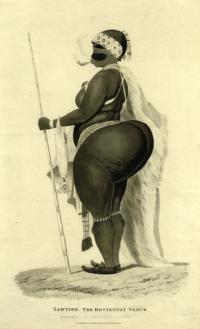‘Hottentot Venus’: the exhibition of Sara Baartman in Dublin in 1812
Published in 18th-19th Century Social Perspectives, 18th–19th - Century History, Features, General, Issue 1(Jan/Feb 2013), Volume 21
F.C. Lewis, Sartjee, the Hottentot Venus, aquatint and engraving, 1810. (British Museum)
In a recent issue (HI 19.2, March/April 2011) Stephanie Rains wrote about the ‘native’ village exhibitions that Ireland both played host to and provided subject-matter for from the 1880s to the early 1900s. Those exhibitions were an enlarged form of a practice that has a long history: the commercial display of living people as exotic curiosities or anthropological specimens. Perhaps the single best-known example of this is Sara Baartman, who between 1810 and 1815 was shown in various parts of England and France. Baartman, nicknamed the ‘Hottentot Venus’, is fairly well recorded and it has long been known that she was brought to Ireland in 1812, when she was briefly exhibited in Limerick. It seems to have been completely overlooked, however, that she was also exhibited for several weeks in Dublin.
















